Swordtail - Xiphophorus hellerii
Scientific name: Xiphophorus hellerii
Common name: Swordtail
Family: Poeciliidae
Usual size in fish tanks: 10 - 12 cm (3.94 - 4.72 inch)
014
Recommended pH range: 7 - 8
Recommended water hardness: 12 - 18°N (214.29 - 321.43ppm)
0°C 32°F30°C 86°F
Recommended temperature range: 21 - 28 °C (69.8 - 82.4°F)
The way how these fish reproduce: Pseudo-Livebearer
Where the species comes from: Central America
Temperament to its own species: peaceful
Temperament toward other fish species: peaceful
Usual place in the tank: Top levels
Feeding Swordtail Fish
Swordtails are omnivores and require a balanced diet to thrive. Their diet should include high-quality granules or flakes as a staple, but it’s important to supplement this with live or frozen foods. Suitable live or frozen options include bloodworms, brine shrimp, and daphnia. You should also provide vegetable matter, such as spirulina-based flakes or blanched vegetables (e.g., zucchini or spinach). This helps maintain their vibrant colors and overall health.
For the best results, feed them once or twice a day, and ensure they consume all the food within a few minutes to avoid excess waste. Overfeeding can lead to poor water quality and health problems.
How to Sex Swordtails
Sexing Swordtail fish is relatively easy once they reach maturity. Males are typically smaller and more slender than females. The key distinguishing feature is the male’s long, sword-like extension on the lower part of the tail fin, which is absent in females. Additionally, males possess a gonopodium (modified anal fin used for reproduction), while females have a standard rounded anal fin.
Females tend to be larger and bulkier, particularly when pregnant. Their larger size also allows them to produce and carry more fry.
Breeding Swordtail Fish
Swordtail fish are prolific breeders and are known for their continuous breeding cycle. They are livebearers, meaning the females give birth to live, free-swimming fry rather than laying eggs. If you have both males and females in the tank, they will likely breed without any intervention.
To encourage healthy breeding, maintain clean water and provide a well-balanced diet that includes live or frozen foods. Pregnant females will develop a dark gravid spot near the anal fin, indicating they are carrying fry. After a gestation period of about 28 days, the female will give birth to a brood of around 20-100 fry, depending on her size and age.
If you want to protect the fry from being eaten by adult fish, either provide plenty of dense plants for hiding or move the female to a separate breeding tank before she gives birth.
Lifespan
The average lifespan of a Swordtail fish in captivity is 3-4 years when kept in optimal conditions. Proper care, including regular tank maintenance, a healthy diet, and stable water parameters, can help ensure they live a full and healthy life.
Origin
Swordtail fish are native to Central America, specifically in regions of southern Mexico, Guatemala, and Honduras. In their natural habitat, they are found in rivers, streams, and heavily vegetated areas, which provide both food and shelter from predators.
Tank Setup and Conditions
Swordtails require a spacious aquarium with plenty of swimming room and some densely planted areas for shelter. A tank size of at least 100 liters (26 gallons) is recommended for small groups, but larger tanks of 200 liters (52 gallons) or more are better suited for maintaining a healthy and active group of Swordtails.
Maintain the water temperature between 21-28°C (70-82°F), with a pH range of 7.0-8.0. They prefer slightly hard water, with a water hardness (dGH) of 12-18. Providing good filtration and regular water changes is essential, as Swordtails produce a fair amount of waste. Strong water flow is also beneficial since they originate from fast-flowing streams.
Recommended Plants
Swordtails appreciate a well-planted tank for hiding spots and as areas to explore. Suitable plants include hardy species like Java Fern, Vallisneria, Anubias, and Amazon Swords. These plants can tolerate the slightly hard water that Swordtails prefer and provide plenty of cover for fry.
Compatible and Incompatible Tank Mates
Swordtails are generally peaceful and can be kept with other non-aggressive community fish. Suitable tank mates include:
- Platies
- Mollies
- Guppies
- Peaceful Tetras (such as Neon or Cardinal Tetras)
- Corydoras Catfish
- Otocinclus Catfish
However, they should not be housed with aggressive or fin-nipping species, as these fish can stress Swordtails or damage their flowing fins. Species to avoid include:
- Barbs (especially Tiger Barbs)
- Large Cichlids
- Betta fish (if fin-nipping becomes an issue)
Males
Females
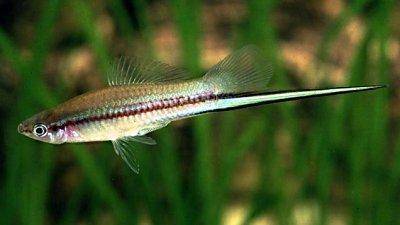










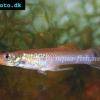 Pike
Pike 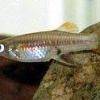 Biskop-tandkarpe
Biskop-tandkarpe 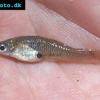 Mosquito
Mosquito 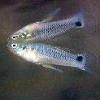 Twospot
Twospot  South
South 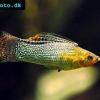 Sailfin
Sailfin 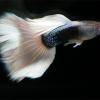 Guppy
Guppy 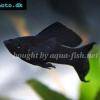 Short
Short 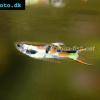 Endler’s
Endler’s 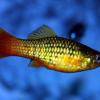 Platy
Platy 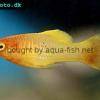 Variegated
Variegated